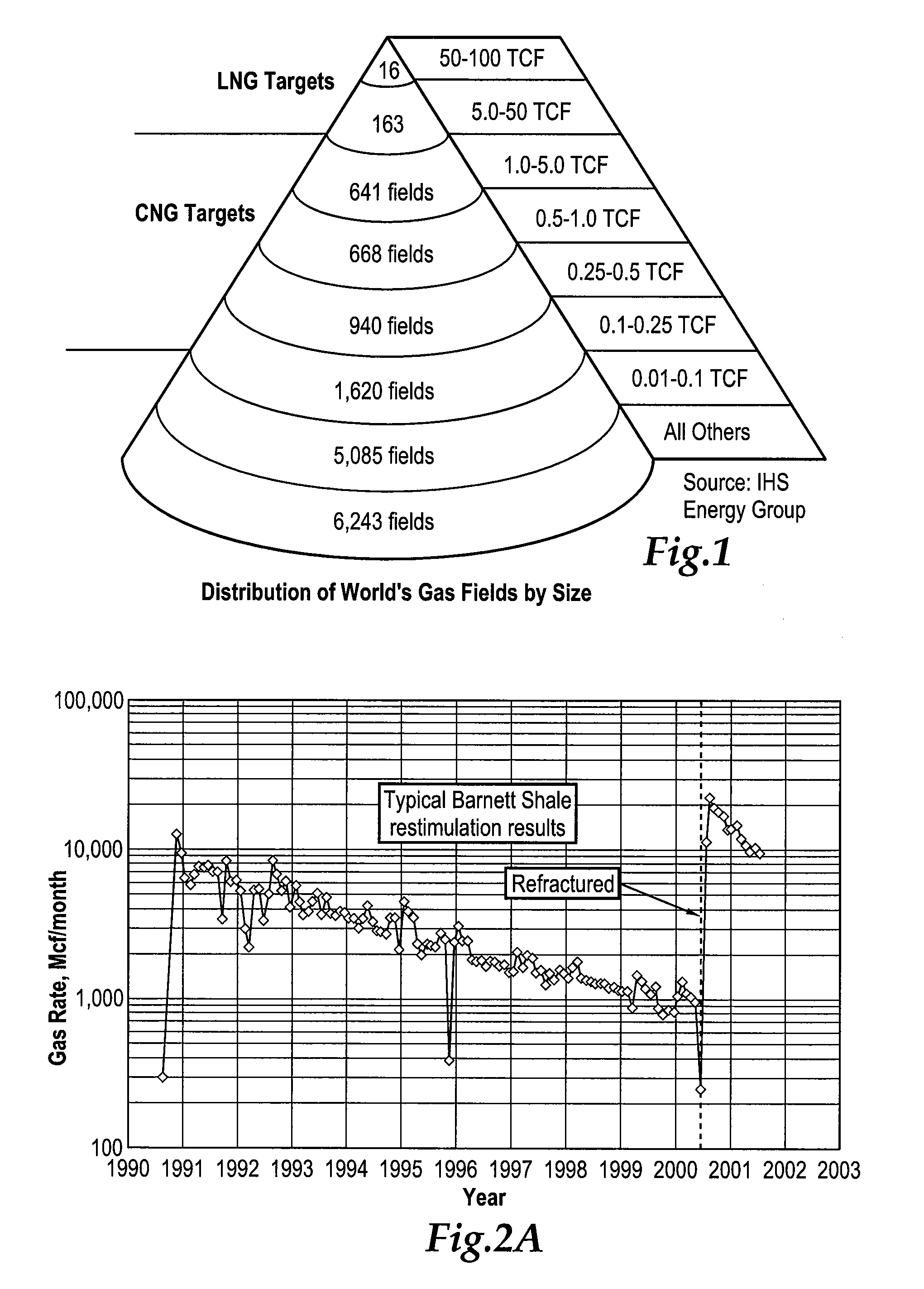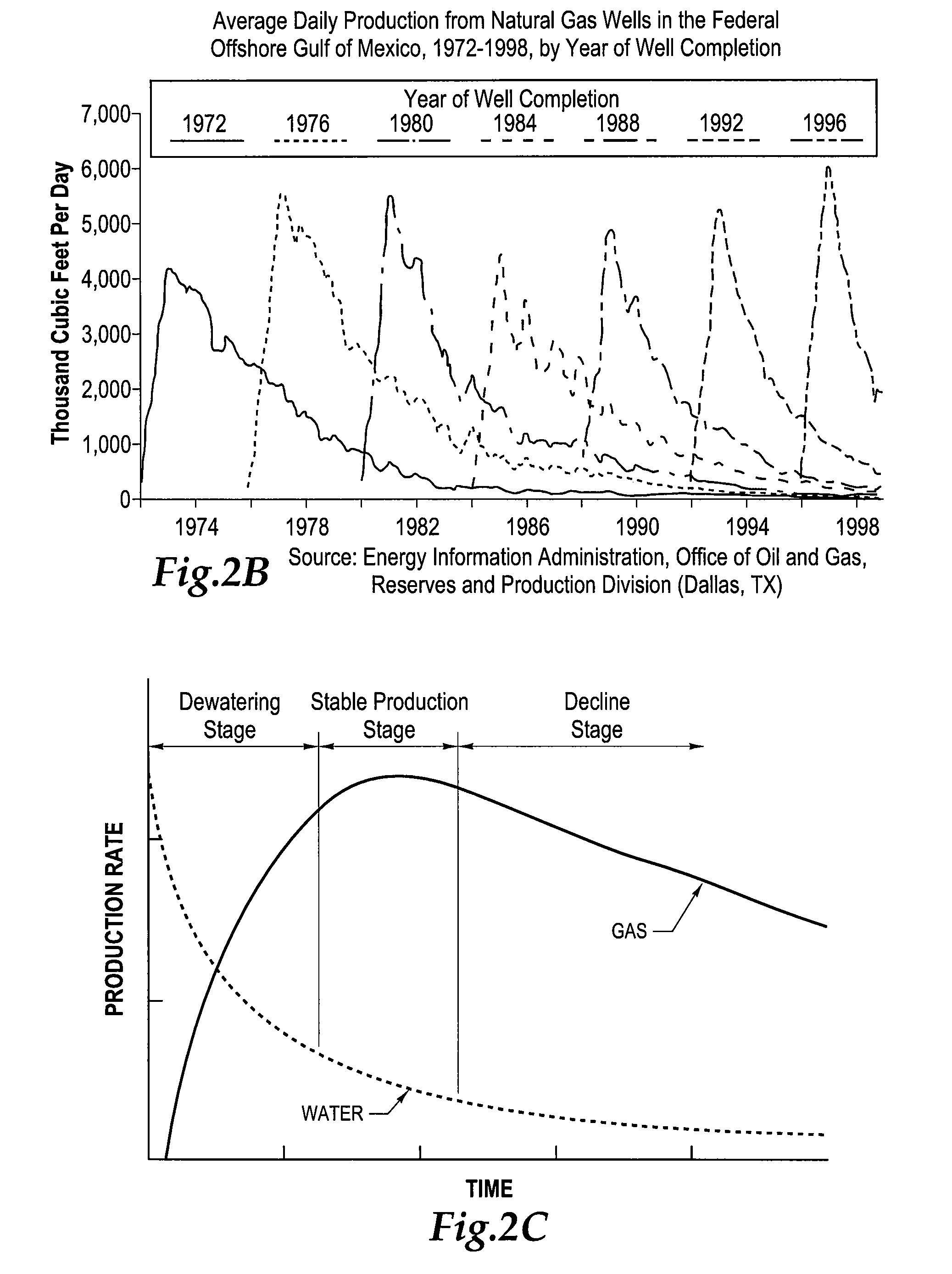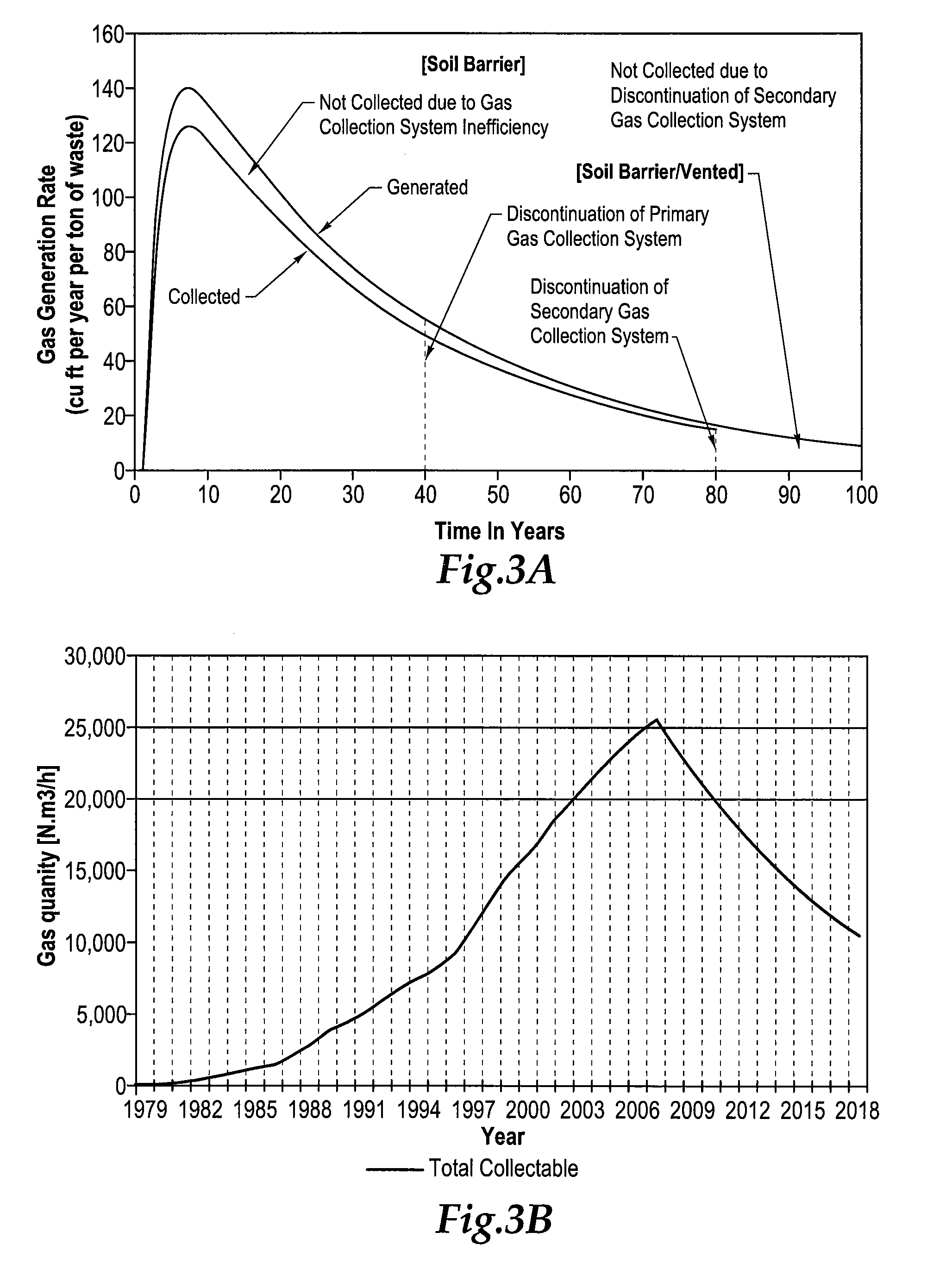Tracking feedstock production with micro scale gas-to-liquid units
a technology of feedstock and feedstock, applied in the field of small scale stranded natural gas/methane field/source monetization, can solve the problems of large scale, difficult to address the problem of small onshore stranded and/or remote gas resources, etc., to minimize remediation work, minimize infrastructure, environmental, construction and architectural changes
- Summary
- Abstract
- Description
- Claims
- Application Information
AI Technical Summary
Benefits of technology
Problems solved by technology
Method used
Image
Examples
Embodiment Construction
[0033]In one embodiment of the invention, micro-scale FT and oxygenate synthesis plants are contemplated for monetizing small gas fields. In some embodiments, such plant capacities may range from about of 200 to about 1000 thousand SCFD (MSCFD) NG feed rates, which are equivalent to from about 20 to about 100 bbl / d hydrocarbon liquids production capacity. In other embodiments, such plant capacities may range from about 1 to about 10 MMSCFD NG feed rates, which are equivalent to from about 70 to about 1,000 bbl / d hydrocarbon liquids production capacity. Without being bound by any theory, there is no reason that technically viable units could not be smaller still, in the range of about 100 to about 200 MSCFD NG feed rates (about 10-20 bbl / d hydrocarbon liquid product); minimum size is strictly a function of economic viability.
[0034]In some embodiments, one or more micro-scale GTL trains may be used. In some embodiments, the one or more micro-scale GTL trains may be identical or may co...
PUM
| Property | Measurement | Unit |
|---|---|---|
| diameter | aaaaa | aaaaa |
| diameter | aaaaa | aaaaa |
| time | aaaaa | aaaaa |
Abstract
Description
Claims
Application Information
 Login to View More
Login to View More - R&D
- Intellectual Property
- Life Sciences
- Materials
- Tech Scout
- Unparalleled Data Quality
- Higher Quality Content
- 60% Fewer Hallucinations
Browse by: Latest US Patents, China's latest patents, Technical Efficacy Thesaurus, Application Domain, Technology Topic, Popular Technical Reports.
© 2025 PatSnap. All rights reserved.Legal|Privacy policy|Modern Slavery Act Transparency Statement|Sitemap|About US| Contact US: help@patsnap.com



